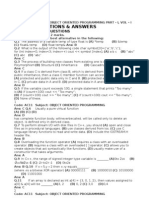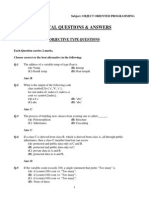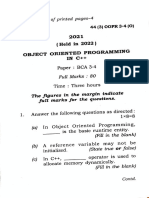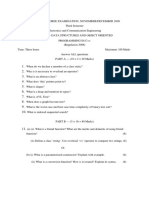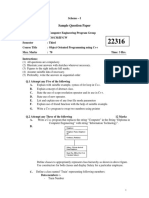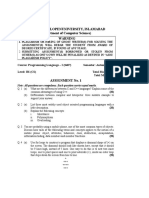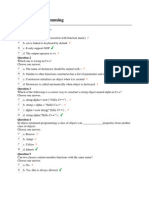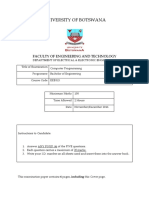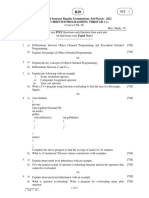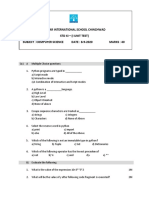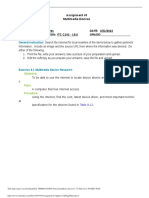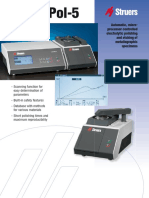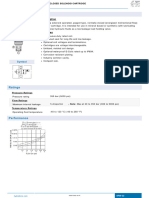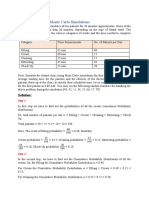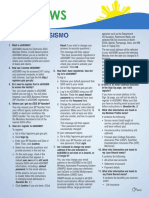0% found this document useful (0 votes)
17 views17 pagesB.E. /B/Tech. Degree Examination, May/June 2007 Third Semester Computer Science and Engineering
The document is an examination paper for Object Oriented Programming covering various topics in C++ and Java, including characteristics of OOP, constructors, polymorphism, inheritance, and exception handling. It consists of multiple sections with both short answer and programming questions, designed for students in Computer Science and Engineering and related fields. The paper includes questions from different semesters and outlines the structure and requirements for answering the questions.
Uploaded by
naacc3.klnceCopyright
© © All Rights Reserved
We take content rights seriously. If you suspect this is your content, claim it here.
Available Formats
Download as DOC, PDF, TXT or read online on Scribd
0% found this document useful (0 votes)
17 views17 pagesB.E. /B/Tech. Degree Examination, May/June 2007 Third Semester Computer Science and Engineering
The document is an examination paper for Object Oriented Programming covering various topics in C++ and Java, including characteristics of OOP, constructors, polymorphism, inheritance, and exception handling. It consists of multiple sections with both short answer and programming questions, designed for students in Computer Science and Engineering and related fields. The paper includes questions from different semesters and outlines the structure and requirements for answering the questions.
Uploaded by
naacc3.klnceCopyright
© © All Rights Reserved
We take content rights seriously. If you suspect this is your content, claim it here.
Available Formats
Download as DOC, PDF, TXT or read online on Scribd
/ 17















